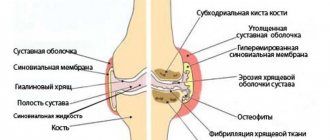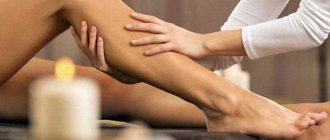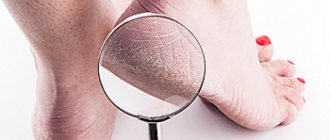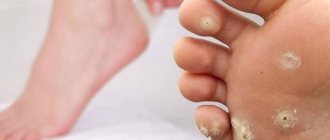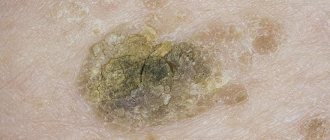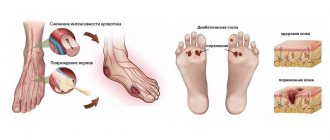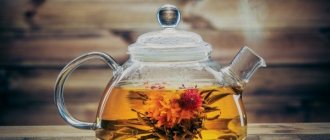Swelling of the legs is not a disease, but its manifestation or consequence of some negative life factors. Symptoms may accompany diabetes mellitus (see), oncology, liver and kidney dysfunction, prolonged standing, drinking too much liquid, etc.
To remove swelling, it is necessary to cure the pathology that caused it. However, in many cases you can use effective “grandmother’s” recipes that have been used since ancient times.
In this article, read about the problem of pinworms in children and adults
Causes of swelling of the legs
The cause of swelling is the accumulation of fluid in the tissues of the body. There are several types of symptoms. Hydraemic edema is caused by a malfunction of the kidneys, stagnant edema appears due to a decrease in albumin concentration or high vascular permeability.
Cachectic ones arise due to cardiac pathologies, neuropathic ones - the consequences of diabetes or after excessive consumption of alcoholic beverages. Traumatic edema occurs due to deformation of bone tissue, ligaments or muscles. The causes can be many diseases and provoking factors:
- uncomfortable shoes;
- age-related changes;
- obesity;
- strong antibiotics;
- various injuries;
- varicose veins;
- swelling of internal organs;
- lymph node metastasis;
- vascular diseases;
- genetic predisposition;
- diseases of internal organs and systems (heart failure, pathologies of the kidneys, liver, thyroid gland, blood vessels, etc.).
Swelling of the legs often occurs in people who stand on their feet for a long time - salespeople, conductors, etc. The feet and legs swell in people who lead a sedentary lifestyle. The cause may be inflammation, impaired blood microcirculation in the veins, hormonal imbalances (see).
Decongestants
If swelling is permanent, do not hesitate to visit a doctor. This may be a symptom of a serious illness. Medications are prescribed according to the diagnosis:
- For varicose veins, it is recommended to take venotonics in tablets; creams, gels, and ointments are prescribed externally, which increase vascular tone.
- For kidney problems, doctors prescribe diuretics. They help remove excess fluid from the body.
- For cardiac causes of swelling, cardiac glycosides, ACE inhibitors (angiotensin-converting enzyme), alpha and beta blockers plus diuretics are effective.
Ointment
Venoprotective and angioprotective agents help reduce the severity of edema in cases of impaired lymph outflow (lymphostasis), varicose veins, and thrombophlebitis of the lower extremities. Such anti-puffiness products are produced on a fat basis, are quickly and well absorbed into the skin, improving local blood microcirculation and increasing vascular tone. Some drugs additionally have blood thinning properties.
The most popular remedy is Heparin ointment. It is based on several active ingredients: sodium heparin, anesthesin and benzyl nicotinate. The ointment reduces blood viscosity, prevents the formation of blood clots, resolves hematomas, and significantly reduces inflammation in blood vessels. It is recommended to apply the drug three times a day and rub until completely absorbed. When using Heparin ointment, allergic reactions are possible: itching, hives, redness. It is contraindicated for use:
- with hypersensitivity to active components;
- with deep vein thrombosis;
- in the presence of open wounds or trophic ulcers at the site of application.
Menovazin ointment is also effective for swelling. The product contains: menthol, procaine hydrochloride, benzocaine. The drug has a tonic and cooling effect, relieves fatigue, relieves heaviness in the legs, and has a mild analgesic property. Menovazine should be used 2-3 times a day. The maximum dosage is 9 grams. The drug has no contraindications, but may cause side effects:
- slight decrease in blood pressure;
- weakness;
- allergic reactions - itching, hives, burning;
- short-term attacks of mild dizziness.
Pills
For severe edema caused by disturbances in the functioning of various organs and systems, diuretics are prescribed in tablets. They help remove excess fluid from the body, increasing urine output. You can use diuretics for swelling of the legs only on the recommendation of a doctor. Many diuretics remove sodium, calcium, and potassium ions from the body along with urine.
All diuretics can be divided into several groups, differing in the mechanism of action, strength and duration of the diuretic effect:
- Thiazide diuretics (Clopamide, Indapamide) interfere with the reabsorption of sodium, water, magnesium and potassium. They act almost instantly, so they are prescribed to quickly eliminate swelling and lower blood pressure. Such drugs are used in short courses.
- Loop diuretics (Furosemide, Torsemide) are more effective than thiazide diuretics in terms of diuretic effect, but do not reduce blood pressure as well. They sharply inhibit the reabsorption of chlorine and sodium ions and enhance the excretion of potassium ions.
- Potassium-sparing diuretics (Amiloride, Spironolactone) have a weak diuretic effect, but do not remove potassium from the body. Diuretics for swelling of the legs of this group are often prescribed in combination with other drugs.
- Osmotic diuretics (urea, glycerin). They help increase osmotic pressure, thereby preventing further accumulation of fluid in soft tissues and removing its excess. This group of drugs is prescribed to patients with glaucoma, skull trauma, and severe intoxication. These medications are rarely used in the treatment of heart and kidney failure.
Diuretic injections for swelling of the legs are used in extreme cases when it is necessary to achieve an immediate therapeutic effect. This is especially important in the following situations:
- the patient's serious condition requiring immediate medical attention;
- a sharp exacerbation of a chronic disease;
- loss of consciousness (fainting, coma);
- severe nausea with vomiting;
- intestinal diseases that provoke disturbances in absorption functions.
A typical representative of diuretics in injections is ethacrynic acid. The substance belongs to the loop diuretics. The mechanism of action of the acid is to increase the microcirculation of substances in the kidneys and relax the smooth muscles. The diuretic effect upon administration develops within 20 minutes and lasts 6–9 hours. Ethacrynic acid can cause numerous side effects and is therefore available only with a prescription. It is contraindicated for the following diagnoses:
- acute glomerulonephritis (kidney disease of an immuno-inflammatory nature);
- water-electrolyte imbalance;
- anuria (lack of urine flow in the bladder);
- acute myocardial infarction;
- diabetes;
- severe diarrhea;
- pregnancy;
- gout (joint disease) or pancreatitis (inflammation of the pancreas).
Cream
Products in the form of a cream are used if discomfort in the legs is caused by the patient’s professional activities, hormonal disorders, or stress. They have only a temporary effect, stimulating the outflow of fluid only at the site of application. Popular creams include:
- Venitan. The active ingredient is escin (a substance obtained by processing horse chestnut). Venitan has venotonic (tonifies the veins), anti-edematous and anti-inflammatory effects. It is used not only to treat edema, but also for varicose veins and venous insufficiency. Side effects are rare, sometimes itching, hives, and burning are possible. Venitan is contraindicated for burns or open wounds at the site of application.
- Sophia. The active ingredients of the product are oil extracts, panthenol and vegetable oils. The cream is prescribed for swelling caused by thrombophlebitis and varicose veins. The drug is applied 2-3 times a day in a thin layer and lightly rubbed in. Does not cause side effects. Can be used during pregnancy and lactation.
- Agave. It contains glycerin, red grape extract, sunflower oil, menthol, horse chestnut extract and aloe. The cream has a venotonic and capillary-protective (increases capillary resistance) effect. Eliminates venous congestion, increases vascular tone, and prevents the development of varicose veins. Does not cause side effects, contraindicated in case of individual intolerance to the composition.
- Mama Care (Mama Care). A cosmetic product containing extracts of medicinal plants (mint, cypress, grapes, walnut oil, omega acid and rutin) has a pronounced decongestant effect. The cream is suitable for the treatment of swelling on the legs during pregnancy and with sensitive skin.
Article on the topic: Levolet - instructions for use and indications, release form, composition and price
Gel
Unlike an ointment, a gel-based drug for leg swelling has a lighter texture, is absorbed faster and does not leave a greasy residue. The main components of the gels are rutin and heparin. They tones the walls of blood vessels, have thinning properties, and help improve blood microcirculation. Popular gel products include:
- Troxevasin. The remedy for swelling of the legs contains as an active component a flavonoid, a derivative of the glycoside rutin - hydroxyethylrutoside (troxerutin). The drug reduces capillary permeability, helps relieve swelling, and strengthens the walls of blood vessels. The gel is applied externally in the morning and evening until a therapeutic effect is achieved. Troxevasin occasionally causes itching, headache, and redness of the skin. The gel is not used if there are open wounds, burns or scratches on the skin.
- Guam DUO. The gel with a cooling effect contains red algae and grape extracts, sea water, and menthol. The drug eliminates heaviness in the legs and gives a pleasant feeling of coolness. Guam DUO is applied with massage movements until completely absorbed twice a day. The gel does not cause side effects and has no contraindications.
How to treat swelling of the legs using traditional recipes
It is easy to determine swelling - marks from the straps remain on the surface of the skin for several hours, the legs swell visually very strongly, or when pressure is applied, a dent remains for a long time.
You can eliminate swelling of the extremities with the help of herbs, compresses, baths, and diuretics. Anyone can prepare them at home.
Many herbal remedies intended for internal use eliminate swelling not only externally, but also of internal organs. If the cause of swollen feet is uncomfortable shoes, then it is enough to replace them with orthopedic ones, or change the last.
In other cases, treatment is required. This is mainly necessary for swelling of the ankles, which is usually not associated with serious illnesses. For greater effectiveness, external and internal means and gymnastics are combined.
Elimination of edema caused by heart failure
An infusion of viburnum is made. Take 2 tbsp. l. berries and steam with 200 ml of boiling water. Then simmer in a water bath for a quarter of an hour and infuse for 60 minutes. The product is filtered and consumed per day, 1/3 cup in 4 doses.
Elimination of edema caused by kidney failure
Bean decoction helps a lot. To do this, it is cut and dried. Then take 1 tbsp. l. beans and steam with 400 ml of boiling water. The product should sit for about an hour, strain and drink three times, 100 ml each.
You can also use horsetail. Tea is brewed from it. For people weighing over 70 kg, brew 2 tbsp in a glass of boiling water. l. dried, crushed plant. If the mass is less, the dosage is reduced by 2 times.
How to remove lymphedema
You can remove lymphedema with simple exercises. For example, lie on your back, raise your legs and sharply spread your legs in different directions for 5 minutes. Another exercise is to rise on your toes and sharply lower your feet onto your heels. Perform at least 10 times. This helps activate lymph flow.
Relieving swelling due to muscle strain
You can eliminate swelling due to muscle strain by collecting herbs - figs, clover, medicinal chamomile, as well as rush and dubrovnik. Herbs are brewed in boiling water and then diluted with cold water to a tolerable temperature.
The effectiveness of the product is due to steaming, which reduces the level of lactic acid. While the legs are in the bath, they need to be massaged from the feet to the knees. The results will be noticeable after just a couple of sessions.
How to quickly relieve swelling from your legs at home
The use of folk remedies for swelling of the legs is justified if the pathological process is not associated with diseases of the internal organs and occurs periodically. Otherwise, the treatment of edema should be determined by a doctor, based on the results of the study.
Baths using medicinal herbs, ice, and salt will quickly relieve fatigue and swelling of the feet. Wax cream will also quickly and effectively relieve tired legs and get rid of varicose veins!
For swelling of the lower extremities, it is customary to take herbal teas brewed from medicinal plants with a strong diuretic property.
Compresses will help quickly remove swelling and restore motor activity.
Diuretics
Do-it-yourself folk remedies take first place in the ranking of methods for quickly relieving leg swelling at home.
There are quite a large number of medicinal plants known to have a diuretic effect, which are used in the preparation of decoctions, tinctures, and medicinal cocktails.
Here are a few recipes for preparing diuretics that are effective in treating leg swelling:
- Cocktail made from carrot, lemon and cucumber juice. To prepare it, all ingredients are mixed in equal proportions. Important: fresh vegetables and citrus fruits cannot be consumed in their pure form. It must be diluted with clean water to the desired consistency. The cocktail is drunk in small portions throughout the day.
- Mint tincture. A few tablespoons of dry herb are steamed with one liter of boiling water. After two hours, the tincture is ready for use.
- Parsley decoctions are an effective, proven remedy for swelling of the legs. For half a liter of water you will need a tablespoon of grated parsley roots. Having dissolved the dry ingredient in water, boil the broth for several minutes and let it brew for twelve hours. The resulting product should be drunk throughout the day (it is better to take it before meals).
- Herbal teas effectively relieve swelling. Decoctions of rosehip, motherwort, burdock or string herbs are good. The herb is steamed in the traditional way (1 teaspoon per glass of boiling water) and taken during the day instead of tea.
Foot baths
When you don’t know what you can do at home, when your feet are swollen, foot baths will come to the rescue. They will quickly relieve swelling of the legs, a feeling of fatigue, and restore natural blood circulation.
- Mustard baths. To prepare it, dissolve a tablespoon of dry mustard powder and a spoonful of salt in three liters of hot water. Soar your feet for at least fifteen minutes.
- Baths with medicinal herbs (chamomile, birch leaves, mint). According to the principle of mustard baths, three liters of hot water will require 100g. dry collection of medicinal herbs. The legs hover for 10-15 minutes.
- Sea salt for feet is an excellent remedy for swelling. To prepare a saline solution, dissolve 100 grams in three liters of water. salt (the amount can be increased). To enhance the healing effect, you can add a tablespoon of apple cider vinegar to the saline solution.
- More contrast than the bath. By alternately dipping your feet into a basin of hot and then cold water, you can quickly remove swelling and restore blood circulation.
By relieving swelling of the legs with the help of folk remedies, you can not only get rid of unpleasant symptoms, but also quickly restore motor activity.
Compresses
Swelling of the legs may be accompanied by unpleasant sensations of itching, pain, and redness of the skin. Having studied in detail the methods of how to remove swelling in the legs at home, you can easily eliminate all the unpleasant symptoms yourself.
1. Cabbage leaves are an excellent remedy for swelling of the legs. The cabbage is crushed with a rolling pin, thick veins are removed and applied to the site of swelling. The compress is kept for at least twelve hours (it is better to leave it overnight). A cabbage leaf compress is the simplest and safest time-tested remedy for swelling.
2. Birch leaves. For the compress you will need 200 g. fresh leaves. They are brewed with boiling water and left for forty minutes. To enhance the medicinal properties, the leaves can be combined with a tablespoon of salt. Gauze is dipped into the resulting mixture, which, folded in several layers, is applied to the swollen area of the leg.
3. Ice compress on feet. Ice effectively relieves swelling, pain, and redness. Crushed ice is wrapped in cloth and applied to the damaged area. Ice compresses are effective in the treatment of varicose veins, and as a first aid method for dislocations and sprains.
4. Compress made of honey and chamomile. The beneficial properties of chamomile in combination with honey are an effective remedy for swelling. A decoction of chamomile and honey is generously moistened into a cloth that is placed on a swollen joint, foot, or ankle.
Scheme for complex treatment of swelling in varicose veins
How to deal with swelling of the legs due to varicose veins is corrected by the doctor, individually in each case, based on the research.
We recommend: a remedy for relieving tired legs and getting rid of varicose veins!
The general scheme of complex treatment consists of several stages:
- In the first week, salt baths are used to combat the problem of swelling of the lower extremities. To carry out this procedure, you need to take a pack of salt for 20 liters of warm water. Having prepared a saline solution, immerse the swollen leg in it for half an hour. It is good to use a basin with high sides or a bucket for salt baths. So, you can cover your leg from the foot to the knee with a saline solution, covering the entire area of the swelling.
- In the second week, the swollen leg is rubbed with tinctures of medicinal herbs. The most popular recipe is: a mixture of propolis, mint, yarrow (a tablespoon each) is combined with vodka (0.5 l) and infused for ten days. Afterwards, the product is filtered and rubbed on the feet before going to bed.
- In the third week, it is good to use cabbage leaves. They are beaten off, applied to the damaged area of the leg and secured with a bandage. The compress must be changed every day throughout the week.
- The fourth week is rest.
You can achieve maximum results using the above scheme on how to get rid of swelling in the legs, provided you repeat the course at least five times. Important: if you have varicose veins, it is strictly forbidden to use hot baths.
Decongestant recipes
You can remove swelling with flaxseeds. You need to take 2 tbsp. l. raw materials and pour 1 liter of boiling water over them. Then the container is put on fire until it boils. The product is cooked for 20 minutes. Then it cools and strains.
The decoction is consumed in 100 ml doses at intervals of 2 hours. The course of treatment is two weeks. For taste, you can add freshly squeezed fruit juice to the product. Other recipes:
- An infusion is made from parsley. Take 1 tbsp. l. crushed plant into pulp and pour 200 ml of boiling water into a thermos. The product is infused overnight, filtered and consumed 1 tbsp. l. at intervals of 1 hour. The duration of treatment is three days. For taste, you can add a little lemon juice to the infusion.
- Take 1 tbsp. l. dry hawthorn inflorescences and its fruits. They are filled with 500 ml of boiling water. The container is covered with a lid and the product is infused for 30 minutes. Then it is filtered and consumed three times a day, 1/3 tbsp.
- Take 1 tbsp. l. corn silk and St. John's wort, 1 tsp each. - adonis, motherwort, as well as the same amount of calendula and valerian. All ingredients are mixed and poured into 1 liter. boiling water The product is infused for about an hour, then a little natural honey is added to it. The medicine must be taken daily in five doses.
- For a wine-honey drink, take red wine and natural honey in a 2:1 ratio. Then the product is stirred until the beekeeping product is completely dissolved. The finished drink should be drunk 50 ml 3 times a day, before meals.
- To prepare a cocktail from different juices, take lemon, cucumber and carrot in equal proportions. They are mixed and divided into three parts, which are drunk at short intervals throughout the day. Before use, each portion is slightly diluted with water. You should drink the cocktail until the swelling disappears.
- Take dried crushed birch leaves or birch buds and pour 100 ml of boiling water. The product is infused for 20 minutes, then filtered and divided into three equal parts. The entire volume is drunk a day, in 3 doses, before meals. The duration of treatment is up to a month.
- As a drink for swelling, birch tea helps a lot. To prepare tea from this tree, take 1 tbsp. l. crushed leaves and brewed in a glass of boiling water. Let the product brew for 30-60 minutes.
- Watermelon rinds are finely crushed and filled with water in a ratio of 1:10. Then the container is placed on the fire and the liquid is brought to a boil. The product is cooked for 20 minutes. Strain and drink 100 ml 4 times a day. The product should be drunk until the swelling disappears completely.
- In 1 l. boiling water is added 4 tsp. melon seeds. The container is closed with a lid and left for 15 minutes, then in an open container for another hour. The product is filtered and taken in 125 ml doses in 6 doses.
- Take 2 tbsp. l. chopped parsley seeds and pour 1 liter. water. The product is infused overnight, filtered and consumed three times a day, 3 tbsp. l. The course of treatment is up to 2 weeks.
- For the corn silk product, take 1 tbsp. l. fibers and pour in 200 ml of boiling water. The product is kept for 5 minutes and then filtered. The infusion should be taken in a glass three times a day. However, the product is not recommended for people with heart disease. Also, this medicine can upset the salt balance.
An infusion of cornflower flowers gives good results. Take 1 tsp. dried raw materials and pour 200 ml of boiling water. The product is infused for an hour, filtered and taken 20 minutes before meals, 3 times a day, 2 tbsp. l. The duration of treatment is until the swelling disappears completely.
How to remove swelling in the legs
In cases where the legs swell periodically and not due to the development of pathological processes associated with diseases of the internal organs, it is quite possible to fight swelling quickly and effectively at home.
If the cause of fluid accumulation is various ailments, the doctor prescribes treatment after carrying out various diagnostic measures and establishing a specific diagnosis; also, with the permission of a specialist, the use of folk remedies is allowed.
These can be herbal decoctions that relieve swelling, infusions, baths, herbal teas, compresses and wax applications. Let's look at each of the methods for eliminating edema in more detail.
Pharmacy drugs
In some cases, specialists may prescribe medications for swelling of the legs, which have a diuretic effect and can have a positive effect on blood pressure. Such drugs can also be taken by patients with kidney failure. Let us consider in more detail which medicine provides relief from edema.
Veroshpiron is a drug that is available in capsules; its active ingredient is spironolactone.
Belongs to the group of potassium-bergering diuretics that block aldosterone, thereby preventing the accumulation of water and sodium, while potassium, on the contrary, is retained in the body and is not excreted in the urine.
This drug not only removes urine, but also lowers blood pressure. Prescribed for cardiac edema, hypertension, fluid accumulation in the abdominal cavity due to cirrhosis, hypokalemia and nephrotic syndrome.
How to take Veroshpiron for edema
Hypothiazide is a thiazide diuretic whose main active ingredient is hydrochlorothiazide.
The drug is available in the form of tablets, blocks the reabsorption of sodium and chlorine ions in the distal renal tubules, this leads to the rapid removal of sodium and chlorine ions, as a result, to the removal of fluid accumulated in the body. Helps relieve swelling caused by cardiovascular pathologies, liver problems, arterial hypertension, nephrosis, nephritis, toxicosis in pregnant women and glaucoma.
Ionic is a thiazide diuretic whose main active ingredient is indapamide.
Most often prescribed for hypertension, it does not affect the course of metabolic processes in the body, therefore it is allowed to be taken by patients with diabetes.
Lasix is a drug based on furosemide and belongs to the group of highly active diuretics and sulfonamide drugs. Prescribed for chronic heart pathologies, acute and chronic renal failure, nephrotic syndrome and liver problems that cause edema.
The drug is contraindicated in pregnant and lactating women.
Indapamide is a non-thiazide diuretic of moderate activity, which is available in tablet form and belongs to the simple sulfonamides. The drugs act on blood vessels, reducing the contractility of their smooth muscles and stimulating the synthesis of prostaglandins. Indapamide also helps reduce left ventricular hypertrophy. Can be taken by patients with hypertension and diabetes.
The main indication is essential hypertension, contraindicated in renal failure, hepatic encephalopathy and hypokalemia.
Furosemide is a fast-acting diuretic for edema, which enhances the excretion of sodium and chlorine. Prescribed for edema caused by cardiac pathologies, cirrhosis, kidney problems, swelling of the brain and lungs, barbiturate poisoning, and late toxicosis in pregnant women. It is also prescribed for severe forms of hypertension and hypertensive crises.
Do not take in the first trimester of pregnancy, in hepatic coma and in patients with hypokalemia, mechanical obstruction of the urinary tract and end-stage renal failure.
How to take Furosemide correctly for edema
Canephron is a plant-based tablet that contains extracts of rosemary leaves, lovage root and centaury herb. The drug eliminates inflammation and relieves spasms, has a diuretic and antimicrobial effect. Helps remove swelling caused by kidney pathologies and bladder problems. Take 2 tablets twice a day for 2-4 weeks.
It is important to drink at least 2 liters of fluid per day while taking this drug.
What diuretic are you taking or have you been prescribed?
There is also a group of pharmaceutical drugs that do not have a diuretic effect, but help strengthen the walls of blood vessels and normalize blood flow, thereby eliminating congestion in the extremities.
- Troxevasin is available in the form of a gel, which not only improves the condition of blood vessels, but can also serve as a prophylactic against edema. You need to use the gel twice a day, lubricating the swollen part of the body with it until completely absorbed. Treat for at least a week. Do not use if you are hypersensitive to the components or have open wounds.
- Heparin ointment - relieves inflammation in blood vessels, normalizes fluid concentration in tissues, its components penetrate through the walls of blood vessels, dilute it and improve the patency of veins and arteries. The use of ointment is contraindicated for hemophilia, pregnant and lactating women. Apply to the affected area 2-3 times a day until the unpleasant symptoms completely disappear.
- Menovazin is a solution for external use based on menthol, which irritates the nerve roots and dilates the lumens of blood vessels. It has an analgesic effect; when used, you feel a cooling, tingling and burning sensation. The product is used on clean skin without injuries or abrasions. The affected area should be rubbed 2-3 times a day.
Too long use can provoke the development of contact dermatitis, an excessive decrease in blood pressure, asthenia and dizziness.
- Lyoton is a blood thinning drug, it is prescribed for problems with venous vessels and heart pathologies. The effect of using the medicine appears on the second day. The product does not pass into breast milk, so it can be used by nursing women. The gel can cause dryness and itching of the skin, so it should be used with moisturizing creams.
- Detralex is a venotonic and angioprotective tablet that helps normalize the tone of the venous walls and prevents the release of plasma into nearby tissues. The dosage depends on the diagnosis that caused the swelling. The product is used only by adults.
Diuretics to the rescue
For swelling of the legs, to remove excess fluid from the body, it is advisable to use not only medications, but also diuretic herbs and products that have this effect.
Related article: diuretic herbs for swollen legs.
Let's look at several recipes for preparing potions that help reduce swelling:
- vegetable cocktail. To prepare it, take the juice of cucumber, carrots and lemon in equal parts. Such juices cannot be drunk in their pure form; they must be diluted with water and drunk several sips throughout the day;
- mint infusion. Take a tablespoon of dry raw materials, pour in a liter of boiling water, leave for 2 hours, drink in small portions;
- Parsley decoction will help to effectively cope with swelling; to prepare it you need 0.5 liters of water, in which 1 tablespoon is diluted. dried parsley roots, grated. The resulting mixture is boiled for several minutes and left overnight. The finished drug is taken throughout the day, preferably before meals;
- diuretic herbal teas, for the preparation of which rose hips, string, linden, motherwort, burdock or burdock are used. To prepare this tea, you need 1 teaspoon. dry raw materials, pour a glass of boiling water, drink throughout the day instead of tea.
Therapeutic baths
Foot baths have helped many patients quickly get rid of swelling. They can be easily made at home, which is why they are very popular. Baths remove swelling, help relieve fatigue and normalize blood circulation. Let's consider the most popular recipes for swelling of the legs, on the basis of which baths are prepared:
- mustard hot baths. To prepare them, you need to dissolve 1 tablespoon in 3 liters of hot water. dry mustard powder and a spoonful of salt. You need to steam your feet for at least a quarter of an hour;
- with medicinal herbs. The cooking principle is the same as in the previous recipe, but for 3 liters of boiling water you need to take 100 g of dry herbs. It could be chamomile, birch leaves or mint. You need to steam your feet for about a quarter of an hour;
- with sea salt. 100 g of sea salt dissolves in 3 liters of water, the concentration can be increased. To enhance the effect, you can add 1 tablespoon to the brine. apple cider vinegar;
- To normalize blood circulation and quickly eliminate swelling, contrast baths are suitable. The principle of their preparation is simple, you need to take 2 basins, one will have hot water, the other cold, alternately dip your feet in each of them;
- baths with birch leaves. To prepare them, you need to take a handful of dry raw materials and pour 5 liters of boiling water over it. When the resulting composition has cooled to 45 degrees, you need to put your feet in it for at least 40 minutes;
- salt. To prepare it, you need to dissolve 1 table in 5 liters of water. lie table salt and 3 table. lie sea, add a few drops of iodine;
- you can mix 3 table. lie sea salt, 1 table. lie soda and 3 tsp. Yoda. This mixture needs to be poured into 5 liters of boiling water and your feet should be steamed in it for at least half an hour. This drug eliminates swelling and strengthens vascular walls, and the skin on the legs becomes more attractive;
- you can make daily baths from decoctions of coltsfoot, sage and other medicinal herbs;
- pine baths. To prepare them, you need to add extracts of juniper berries, pine and spruce needles to the standard decoction of chamomile, sage and burdock. All ingredients are mixed in equal proportions. Add 5 tablespoons to 2 liters of boiling water. mixtures. The resulting solution is simmered for half an hour over low heat. The broth is poured into a bucket and diluted with warm water up to 40 degrees. Your feet need to be steamed in it for at least half an hour; you can additionally add a little salt; during the procedure, your feet can be lightly massaged;
- An infusion of cucumber has a good effect; to prepare a bath with it, you need to pour 100 g of herb into 5 liters of boiling water and leave for 8-10 hours. After filtering, the finished solution is heated to 37 degrees and your feet are immersed in it for 20 minutes;
- You can add essential oils or menthol to any of the baths listed above; it is very important that the water in them is not too hot, especially when the cause of swelling is varicose veins;
- chamomile To prepare it, mix warm water and chamomile decoction in a 1:1 ratio. You need to steam your feet in this mixture for about 30 minutes. Next, the feet are wiped dry, and the ankle is lubricated with a soothing cream. This home method quickly relieves discomfort.
Compresses
Frequent accompaniments of edema are itching, pain and redness of the skin. With the help of compresses that can be easily prepared at home, you can get rid of all the discomfort associated with swelling. Let's look at the most famous recipes:
- Cabbage leaves will help to quickly cope with swelling. They need to be kneaded with a rolling pin, the compacted veins removed and applied to the swelling. You need to keep this compress for at least 12 hours, so it is better to do it at night. This is a simple and safe remedy;
- you can make a compress from horse sorrel, grind it into a paste and apply it to the swelling for a third of an hour;
- a compress of salt ointment, which is prepared from 1 kg of chicken fat and 0.5 kg of iodized salt. The ingredients are heated and mixed in a water bath and applied to the site of swelling overnight. In the morning, rinse your feet under a contrast shower;
- Alcohol infusion from Kalanchoe perfectly relieves swelling; to prepare it, you need to fill the jar to the top with the leaves of this indoor plant, and then fill them with vodka to the very neck. The tincture takes 2 weeks to prepare; it can be used not only for compresses, but also for rubbing;
- an oil compress relieves swelling from the joints; to prepare it, you need to mix camphor and olive oils in equal proportions and rub the swollen area, and then apply a tight bandage;
- Birch leaves are also excellent at eliminating swelling. They must be used fresh. For the compress you need about 200 g of raw material, which is poured with boiling water and infused for 40 minutes. 1 table is added to the resulting infusion. lie salt, the resulting mixture is dipped in gauze, which is then applied to the swelling;
- To quickly relieve swelling, relieve pain and eliminate redness, you can apply an ice compress. To prepare it, you need to wrap crushed ice in a cloth and apply it to the affected area. This is an effective method for varicose veins and is often used for injuries and sprains;
- A compress with apple cider vinegar will help normalize blood pressure, strengthen blood vessels and quickly relieve swelling. To prepare it, you need to soak a clean piece of cloth in vinegar and apply it to the problem part of the body, with cellophane on top. Keep the compress for at least an hour, and the skin may turn slightly red;
- You can prepare a honey-chamomile compress. To do this, you need to dissolve honey in a decoction of chamomile and moisten the cloth with the resulting mixture, which is subsequently applied to the swollen joint or foot;
- potato compress. To prepare it, you need to boil the potatoes, crush them together with the broth, let it cool, and then apply the resulting puree to the swelling for half an hour. This method is not suitable for patients with varicose veins.
How to get rid of swollen legs using folk remedies
Treatment of edema with folk remedies brings a quick effect, and in some situations it may be the only possible method of treatment. Herbal teas, infusions of herbs, dried fruits and fruits, which have a diuretic effect, help to quickly relieve swelling.
Some teas can be taken for a long time, which allows you to prolong the diuretic effect and become a preventive measure for the development of recurrent edema due to renal pathologies and problems with the vascular system.
To effectively cope with swelling at home, you can use the following recipes.
pumpkin juice
This vegetable helps quickly relieve swelling as it has a mild diuretic effect and is a natural antioxidant. Pumpkin is accepted in any form and in unlimited quantities. Pumpkin porridge helps in the treatment of cardiovascular pathologies, problems with veins and kidneys. Pumpkin helps reduce swelling; for this you can not only eat it and drink its juice, but also prepare compresses.
Peppermint
Using this herb effectively combats various types of edema. To prepare the drug, you need to take 20 g of the plant and pour 0.5 liters of boiling water over it. The product is infused for about 30 minutes. You can drink mint infusion instead of tea, at least 2 times a day. This is a good folk remedy for edema, but it is contraindicated in patients with hypotension, so it can only be used on the recommendation of a doctor. Herbal infusions really help remove swelling, but before using them you should familiarize yourself with the possible side effects of using herbs and allergic reactions to herbs.
Flax seeds
A decoction of flaxseed can quickly remove swelling; to prepare it, pour 20 g of seeds into a glass of boiling water. To make the broth more saturated, it needs to be simmered over low heat. The drug is taken every 3 hours, 150 ml at a time. This is the dosage for adults.
Elder
In folk medicine, flowers, berries and rhizomes of this plant are used. To get rid of swelling, you need to use the roots, pour 0.3 liters of vodka over them and leave for 2 weeks. The resulting composition must be shaken periodically. When the tincture is prepared, it needs to be strained. To remove the tumor, this folk remedy must be taken according to the following scheme: first 3 days, 10 drops, then 15 drops, from the 10th day the dosage increases to 20 drops. 3 times a day. With the help of this drug you can not only reduce swelling, but also improve the patient’s condition as a whole.
Kalina
This is a traditional remedy to combat swelling. Viburnum has an unusual bitter taste, and infusions and teas based on it are natural antibiotics and diuretics that relieve swelling. The recipe is simple: you need to take a couple of tablespoons of viburnum berries, steam them with boiling water and simmer over low heat, and then leave for about 30 minutes. The product is filtered and taken 70 ml three times a day for 3 weeks.
Watermelon
This huge berry is a natural diuretic that removes excess fluid from the body. To have an effect, you need to eat watermelon throughout the whole day, that is, give yourself a fasting watermelon day. It is better to do this at a time when watermelons ripen under natural conditions, that is, at the end of August and September.
To improve kidney function, you need to eat an unlimited amount of watermelon pulp throughout the day.
Herbal infusions
Birch leaves, St. John's wort, horsetail or corn silk will help cope with swelling. Herbs are steamed individually or combined with each other and taken only as prescribed by a doctor, since some of them can reduce the effectiveness of taking medications or, conversely, enhance it.
You can also take lingonberry leaves and bear ears in equal parts, pour this mixture with two glasses of boiling water and boil in a water bath, then leave until it cools completely. The resulting composition is drunk throughout the day; it very quickly removes swelling and prevents its reappearance.
Knotweed tea is an excellent reliever of swelling; in addition, it removes toxic substances and waste from the body. An infusion of parsley roots and leaves, which are steamed with boiling water in a thermos for 7-8 hours, and then taken 1 tablespoon at a time, has a good diuretic effect. three times a day.
You can make a decoction from the fruits and inflorescences of hawthorn. They need to be poured with 0.5 liters of boiling water and strained after half an hour. Drink a third of a cup three times a day between meals. Bean broth has a similar diuretic effect; to prepare it, you need to boil 1 table in 0.4 liters of water. a spoonful of chopped bean flaps. After preparation, the broth is infused for an hour, filtered and taken hot, half a cup three times a day.
Hirudotherapy
Leech treatment helps improve blood circulation and eliminate swelling. This method also helps relieve fatigue from the legs and remove the feeling of heaviness. You can also use special pharmaceutical creams based on leech extract, which need to be rubbed into swollen areas to achieve a drainage effect.
Gymnastics
Simple but very effective exercises will help relieve fatigue from the legs and eliminate swelling:
- lifting small objects from the floor with your toes;
- rotating your feet clockwise and then counterclockwise;
- rising on your toes with a roll on your heels;
- walking and jumping on toes;
- lying on the floor, bend and straighten your knees.
It is also very effective to eliminate daily swelling from fatigue by raising your legs in a supine position above the level of your heart; it is better to raise your shins on a bolster or pillow.
Massage
If a patient, due to the characteristics of the body or age, often experiences swelling, it would be a good idea for him to master the technique of lymphatic massage. It will help to cope with swelling faster if you additionally use massage or essential oils. All movements should be performed from the bottom up, this way blood circulation is normalized and stagnation can be prevented.
Diuretics
Pumpkin, cooked in any form, removes swelling well. You need to eat it at least twice a week. Infusion of dried apricots also quickly removes excess liquid. Only well-dried fruits are suitable for it. They are poured with 1000 ml of boiling water and left overnight. The finished product should be drunk in small portions throughout the day.
However, more often folk decongestants are made from diuretic herbs (see). There are a large number of them. The most common and accessible:
- series;
- burdock (its root is used);
- motherwort;
- pharmaceutical chamomile;
- dill;
- arnica;
- mint leaves;
- elder.
Decoctions can be made from one of the herbs or a combination of them. The product should be taken at least once a day, before meals. General recipe for all herbs: take 1 tsp. dried crushed plant (or collection) and pour 200 ml of boiling water. The product is infused for half an hour.
If swelling appears due to a malfunction of the kidneys, then the best remedy is elderberry. If you drink a decoction from it daily, the amount of liquid accumulated in the tissues will begin to quickly decrease.
Mint infusion removes puffiness well. You need to take 30 g of crushed leaves and pour a liter of boiling water over them. Then the product is infused for an hour. Taken in 3-4 doses during the day at short intervals.
How to relieve swelling of legs during pregnancy
Obstetricians and gynecologists treat edema in pregnant women. They often prescribe herbal preparations and give advice to avoid the appearance of edema.
Edema in pregnant women is a fairly common reason to go to the hospital. For pregnant women, the presence of edema is determined as follows: place the woman on the couch and press firmly on the site of the swelling. If there is swelling, a hole remains. In healthy people, the skin immediately rises into place. To remove excess fluid, you should take a bag of orthosiphon stamen, pour boiling water over it, and drink it twice a day, for no more than a week. Be sure to take any diuretics only as prescribed by a doctor. Since microelements useful for the fetus are excreted along with urine: calcium, magnesium, potassium.
If you take diuretics for a long time during pregnancy, after a year the woman risks losing her teeth, or the child may be born very weak.
It is important when taking diuretics to make yourself a vitamin salad from: dried apricots, raisins, prunes. It is not recommended to take complex vitamins.
During pregnancy, dill seeds should be drunk very carefully; the decoction, like all diuretics, removes a lot of vitamins and beneficial microelements. It is prohibited without a doctor's recommendation.
Puffiness of the lower leg is not only discomfort and pain, but also a visible defect that repels interesting looks. You can cope with edema forever only by eliminating the main cause of the underlying disease. Attempts without following this rule are as effective as “water through a colander,” and only useless treatment.
Tags: health, swelling
- Related Posts
- How to determine the type and shape of a woman’s breasts, find out the size and choose the right underwear, size tables and their interchangeability
- Myths about collagen and the harsh reality of fibrosis
- Psychosomatics Liz Burbo, table of diseases and their root causes
« Previous entry
Compresses, applications, rubbing
For therapeutic rubbing, an infusion of Kalanchoe is made. A glass half-liter jar is filled to half with the pulp from the plant. Then it is filled with alcohol. The product must be infused for 2 weeks in a dark place.
During this time, the container is shaken daily. Rub the swollen feet with the prepared product in the mornings and evenings. Duration of treatment is up to 6 months. Other recipes:
- Add 3 tbsp to 1 glass of olive oil. l. crushed nettle roots. The product is boiled for 5 minutes over low heat, then cooled and stored in the refrigerator. The swollen areas are rubbed before going to bed. The course of treatment is a month.
- Chop a few cloves of boiled garlic to make 1 tbsp. l. with a slide. The gruel is poured with 500 ml of cold water and placed on the fire until it boils. Then it cools and strains through cheesecloth. Rub the garlic mixture on your feet in the mornings and evenings, and rub the remaining water during the day. The course of treatment is at least a month.
- You can make a vodka tincture. For the product, take red rowan berries, lingonberry and nettle leaves, crushed calamus root, linden and black elderberry flowers, as well as parsley (with roots) and Kalanchoe. Take 20 g of the mixture and fill it with vodka in an amount of 500 ml. The infusion is taken for two weeks, 2-3 tsp, before meals.
- Take 100 g of juniper berries, 1 tbsp. l. powdered mustard and baking soda. The product is infused for an hour, and then a compress from the resulting mass is applied to the legs for 15 minutes.
- The easiest way to relieve swelling is to make lotions from horse sorrel, raw grated potatoes or chopped cabbage leaves.
- Melt a liter of chicken fat and add 500 g of table salt. The components are mixed and the product must cool. The resulting ointment is applied in the form of compresses at night every day. In the morning, the product is washed off with a contrast shower.
- Kalanchoe leaves are crushed to a mushy state and placed in a container. Then the same amount of vodka is added. The product is infused for two weeks in a dark place. Then the product is rubbed on the ankles.
- Two types of oil are mixed - olive and camphor. Rub the mixture on your feet from ankles to knees. Then they are wrapped in cotton fabric and insulated with warm gaiters. However, they must have a weak elastic band.
One of the most effective means to remove swelling caused by uncomfortable shoes is a collection of horsetail, astragalus, birch buds and knotweed. They are brewed with boiling water and a packet of rock salt. Then a towel is soaked in the solution and wrapped around the swollen areas. This simultaneously has a beneficial effect on the skin.
Therapeutic baths
Baths using sea salt help against swelling. You need to take 1 tbsp. l. raw materials and fill it with three liters of water at a temperature of 35 degrees. Swollen feet are kept in the bath for 15 minutes. Treatment lasts 7 weeks. A minimum of 3 sessions per week is recommended.
You can also make a bath of birch, mint and chamomile. Take 100 g of the mixture and pour a glass of boiling water. The product is infused for 60 minutes. Then the solution is poured into the bath, into hot water. The legs are held in it until the liquid cools down.
Contrast baths help remove swelling. Feet should be kept in cold or hot water for five minutes.
Baths for swelling caused by varicose veins
Severe varicose veins cause swelling, which can be removed with applications of crushed elderberry leaves. When large veins protrude, berries and tree bark are added to the mass. Take 20-30 g of the resulting mixture and keep it in a saucepan over steam.
When the mass is moistened, mix it into a paste and transfer it to a cotton cloth. Then it is applied with the mixture side to the swollen area and fixed for several hours. If you apply the compress daily, you will already see significant results within a few days. The same application can be made from horsetail.
Therapeutic gymnastics and massage
Walking barefoot on your toes for 3 minutes and rotating your feet for a minute in one direction and the other helps eliminate swelling. You can also spread and clench your fingers. You need to hold them for a minute. The “bicycle” exercise helps a lot.
You need to walk barefoot for half an hour every day, stretching your feet using circular movements. When working sedentarily, you need to bend and straighten your legs and squat once an hour.
You can also massage the swelling with ice cubes. However, it is better to freeze not just water, but herbal solutions based on mint, chamomile, string or other medicinal herbs.
Comprehensive treatment of leg swelling
To eliminate swelling, you can use complex treatment. In the first week, salt baths are done. Water at room temperature is poured into a bucket and a kilogram of table salt is dissolved in it. Place your feet in the container for half an hour.
This solution can also be prepared in the pelvis if the feet and ankles are swollen. However, if your shins swell, it is better to keep your feet in a bucket. The procedure is carried out daily.
During the second week, the feet are rubbed with a healing infusion. It will require 1 tbsp. l. crushed birch leaves, mint, horsetail and yarrow, plus propolis. The mixture is poured with 500 ml of vodka and infused for 10 days. Afterwards it is filtered and squeezed out. The feet are rubbed with the tincture daily, and it is stored in the refrigerator.
During the third week, compresses are made from crushed fresh cabbage leaves before going to bed. Then a week break is taken and the treatment is repeated again. Therapy is repeated in at least three courses. If necessary, their number can be increased.
